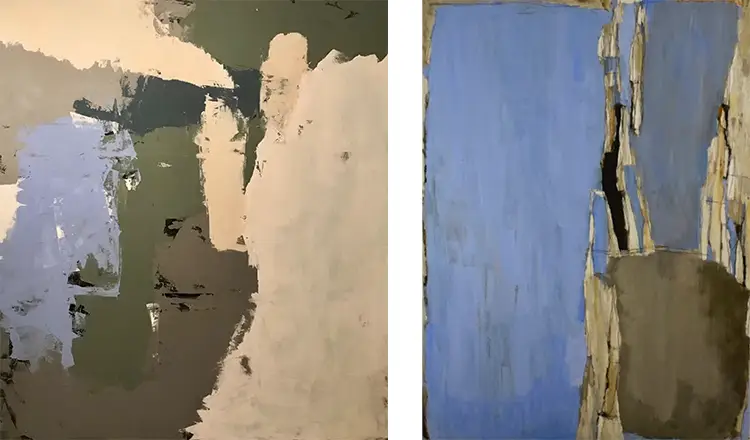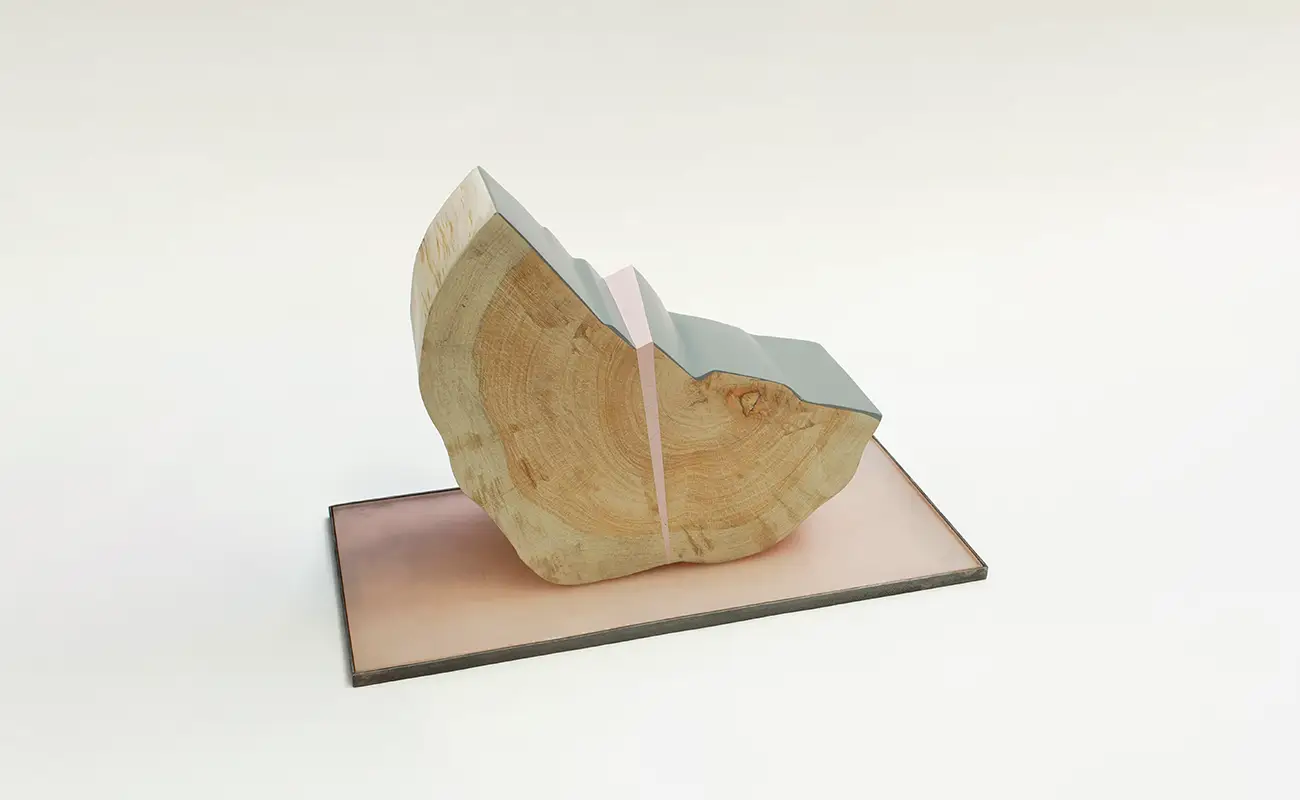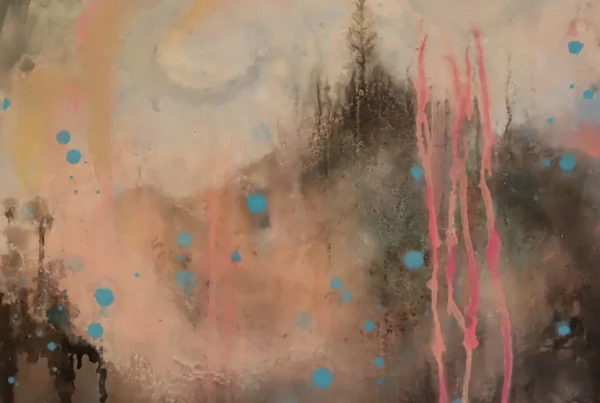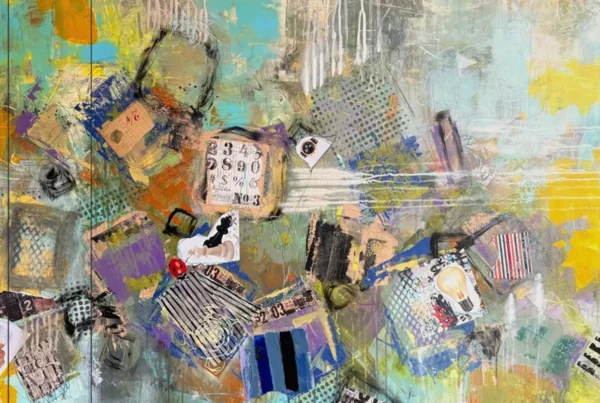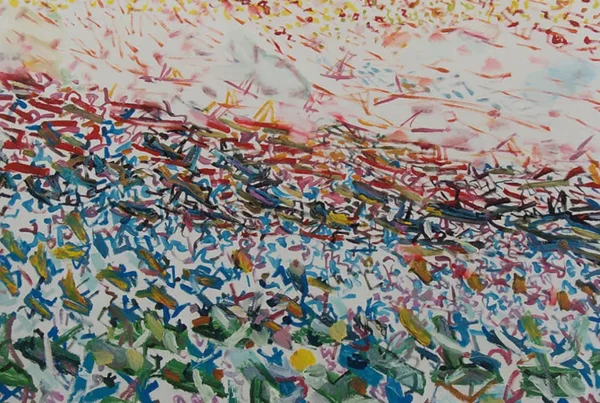The Surface Beneath the Gesture
María José de Simón, born in Santander in 1963, has carved a deeply personal path through contemporary Spanish art. Her work, spanning painting, sculpture, jewelry design, and printmaking, reflects a continuous quest to feel rather than define the world. Rather than imposing narratives or conceptual rigidity, she embraces instinct, allowing her intuition to dictate the direction of her practice. Her approach favors a perceptual engagement with materials and surfaces, inviting the viewer into a conversation with color, form, and absence. In place of declarative symbolism, her pieces whisper through subtleties—scraped textures, faint traces, and expansive fields that shift between clarity and ambiguity.
In her paintings, solitary atmospheres emerge not from figuration but from sensation. De Simón explores the expressive potential of materials without confining them within representational boundaries. Echoes of arte povera resonate in her gestures: raw, yet emotionally charged marks that appear as remnants of action rather than deliberate constructs. Instead of clearly defined forms, her compositions absorb the viewer in their hazy openness, their loosely structured spaces allowing emotion to drift across the canvas. This approach, deeply aligned with the sensibility of abstract expressionism, places emphasis on the visceral relationship between artist and surface, turning each painting into an imprint of her inner rhythms. It is a dialogue of weight and balance, where the body’s interaction with scale and dimension becomes a primary compositional force.
Crucial to her process is the belief that the surface of a canvas is more than a plane—it’s a field where motion, memory, and perception collide. Her artworks are marked by layers that reflect both accumulation and erasure, where random fills and deliberate scrapes disrupt and shape space. These gestures generate a dual sensation: a sense of physical depth that draws the eye inward and a surface intimacy that holds onto the smallest residues of touch. In this interplay, María José de Simón does not so much “construct” images as allow them to surface, making the act of painting an extension of her emotional and physical presence. Her sensibility, rather than seeking explanation, invites coexistence between material and feeling.

María José de Simón: The Poetics of Material Fragility
Within her broader artistic journey, de Simón has expanded her inquiry into fragility and presence through sculpture and object-based interventions. She draws inspiration from abandoned or overlooked elements of the urban and natural environment—iron sheets, chunks of concrete, tree trunks—repurposing these fragments into carriers of quiet significance. These materials, often retrieved from public spaces, speak not only of decay and excess but of endurance. They become witnesses to the passage of time and containers of potential meaning. Through gentle manipulation—be it through welding, imprinting, or balancing forms—she restores to these objects a subtle grace that transcends their previous states of neglect.
Her sculptural works exist in a liminal space where mass and delicacy coexist. In her handling of these discarded elements, de Simón doesn’t erase their past; instead, she layers new intentionality over their damaged surfaces. The corrosion and wear remain visible, embraced rather than concealed. This aesthetic of imperfection doesn’t reject beauty—it redefines it. Each composition, whether a freestanding piece or a collage of sculptural bodies, resists alignment with a specific era or style. The works seem temporally suspended, creating immersive environments that resist definition while stirring a sense of quiet unease and nostalgia. They inhabit a place of stillness, charged with the energy of things that have survived abandonment.
What emerges from this approach is a philosophy that rejects superficial spectacle in favor of subtle revelation. For de Simón, materials are not merely chosen for their visual appeal, but for the latent presence they contain. She listens to what is concealed in the texture of an object, in its weight, in its accumulated history. This attentiveness enables her to create atmospheres that aren’t tied to a single cultural reference point but instead evoke something universal: the neglected beauty of the world around us. Her sculptures and installations do not impose a fixed reading but offer a renewed sensitivity to the ordinary, challenging viewers to reconsider the boundaries between waste and worth.

Inhabiting Sensation Through Scale
Throughout her career, María José de Simón has remained deeply invested in how size, weight, and physicality influence the act of creation. Her paintings, in particular, are shaped by her understanding of the canvas as an extension of the body. Each gesture becomes a spatial event, not merely a mark. This sensitivity to movement and surface extends beyond painting into other dimensions of her work, where scale is never arbitrary but always intimately tied to the body’s own limitations and freedoms. Whether working on large surfaces or smaller tactile objects, she maintains a consistent dialogue between the physical experience of making and the emotional experience of viewing.
This concern with proportion and material presence finds a natural extension in her jewelry design. Far from being a departure from her visual practice, it serves as a concentrated microcosm of her artistic philosophy. In her jewelry, precious metals are shaped not to dazzle but to be felt—pieces marked by purposeful scratches, softened contours, and weight that registers against the skin. Here, magnitude is experienced at a personal scale, where each object becomes a portable sculpture, embedding the same attention to surface and detail that characterizes her larger works. Her stone settings and metal inlays subtly echo her painterly gestures, making each piece of jewelry not only an adornment but a small-scale meditation on touch and form.
Through these multiple formats, de Simón weaves a consistent inquiry: how can material be made to speak without words, and how can gesture hold emotional charge without narrative? Whether through layers of paint, the burnishing of metal, or the texture of salvaged iron, her work insists on the autonomy of the physical act. She grants importance to what is easily dismissed—the faint trace, the weight of a thing, the silent space between forms. It is within these nearly invisible articulations that her work gains its power, transforming the overlooked into carriers of intimate resonance. Every surface she touches becomes a site of possibility, shaped not by design but by the interplay between intuition and resistance.
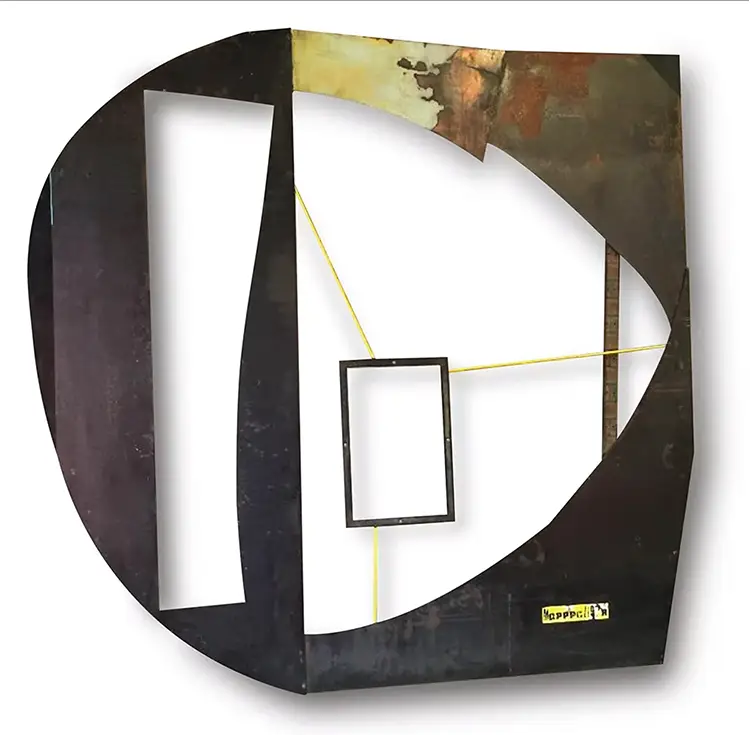
María José de Simón: Between Ruin and Radiance
The tension between permanence and transience is a vital force in María José de Simón’s evolving practice. From printmaking to sculpture, she constantly gravitates toward the interplay between fragility and resilience. Her recent experimentation with screen printing on found objects reflects this trajectory—an effort to restore grace through minimal intervention. These pieces do not erase history but build upon it, enhancing the object’s existing narrative through delicate overlays of ink, line, or contour. The imprint becomes not a declaration but a whisper—a signal that the object has been seen, touched, and considered once more.
Her background in fine arts training, primarily undertaken in Madrid through various painting and drawing courses, informs the rigor and freedom of her techniques. Over the years, she has exhibited extensively in Mexico, gaining recognition through institutions like the Museo de Arte Abstracto Manuel Felguérez, Museo de Arte Moderno of the State of Mexico, Fundación Sebastián, and the Centro Cultural Estación Indianilla, among others. Each exhibition has deepened her engagement with the cultural intersections of material, memory, and form. Upcoming projects, including exhibitions in Zacatecas and at Galería Isabelle Serrano in Mexico City, suggest a continuing evolution in her investigation of space and objecthood, always informed by the nuance of sensory experience.
María José de Simón’s work resists finality. It does not settle into a singular identity or message but shifts and mutates, much like the materials she selects. There is a persistent humility in her practice, a refusal to dominate her medium, and instead, a willingness to collaborate with what she finds. Whether in the silent elegance of a carved surface or the unresolved gestures across a canvas, her art carries the weight of lived experience translated into touch. She transforms what has been cast off into something quietly luminous—reclaiming not just objects, but the attention they deserve.
